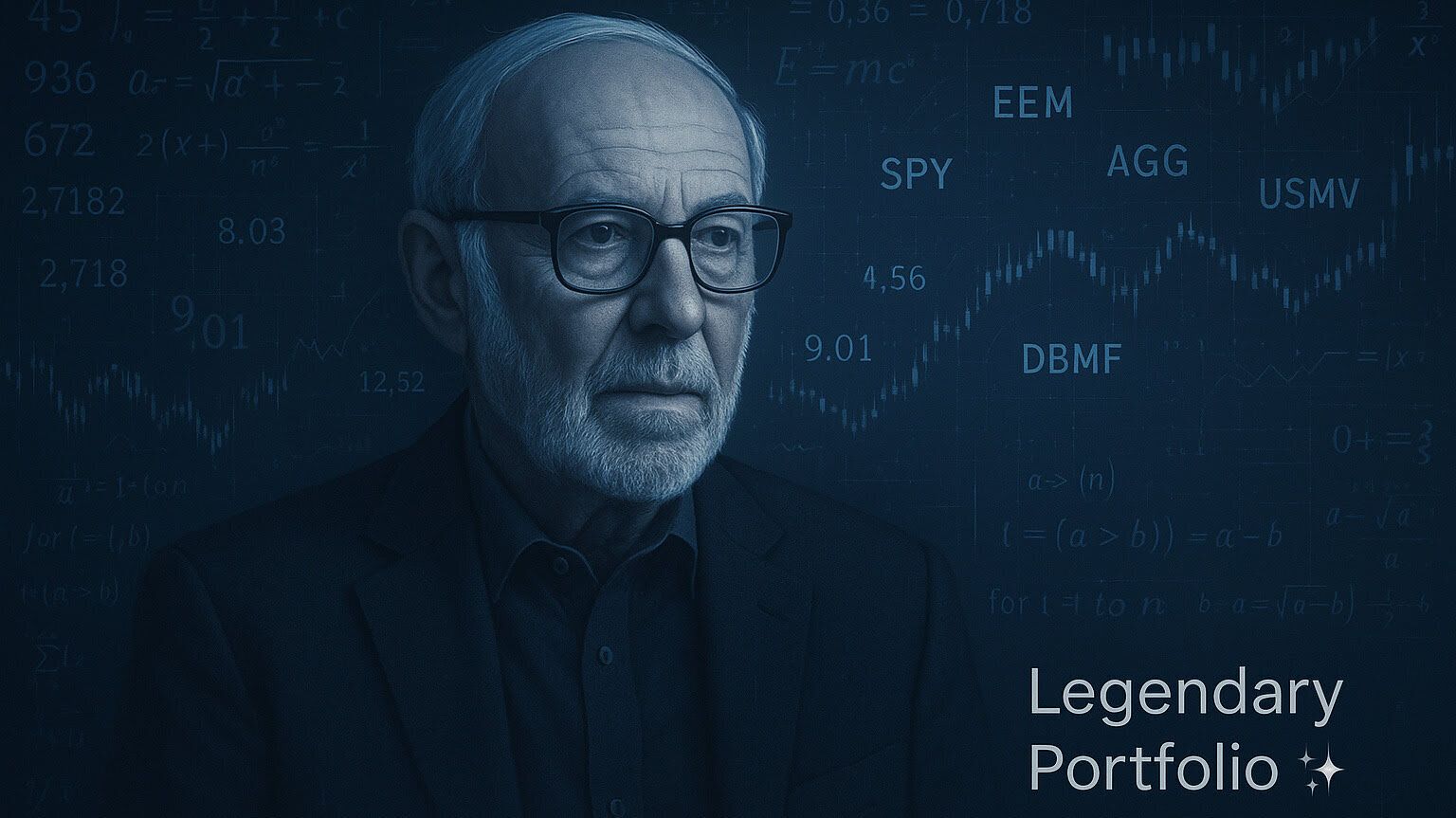- ETF UNO
- Posts
- 🔢Jim Simons: The Quant King’s ETF Playbook
🔢Jim Simons: The Quant King’s ETF Playbook
✨Legendary Portfolio built on data, discipline, and diversification

In today’s Legendary Portfolio Series, we spotlight Jim Simons. Unlike typical Wall Street figures, he is a mathematician and codebreaker known for his work with Renaissance Technologies. His flagship Medallion Fund has achieved remarkable returns by using mathematics, algorithms, and data, making its success seem almost unbelievable.
What if Jim Simons, the quantitative genius, could only invest in ETFs? Which ones would he choose to reflect his data-driven investing philosophy?
The best HR advice comes from people who’ve been in the trenches.
That’s what this newsletter delivers.
I Hate it Here is your insider’s guide to surviving and thriving in HR, from someone who’s been there. It’s not about theory or buzzwords — it’s about practical, real-world advice for navigating everything from tricky managers to messy policies.
Every newsletter is written by Hebba Youssef — a Chief People Officer who’s seen it all and is here to share what actually works (and what doesn’t). We’re talking real talk, real strategies, and real support — all with a side of humor to keep you sane.
Because HR shouldn’t feel like a thankless job. And you shouldn’t feel alone in it.
🧠Cracking the Code: Simons’ Investment Philosophy
Jim Simons relies on data patterns rather than gut feelings or economic predictions. He and his team developed models to analyse vast amounts of information, including price movements and market anomalies, making trades based on probabilities.
This approach has turned Renaissance Technologies into one of the most successful hedge funds ever, significantly outperforming traditional investing.
We don’t ask “Is Apple a good company?”
We ask, “What does the data tell us about Apple’s stock movement in relation to everything else?”
To break it down, here's what defines Simons' style:
Quantitative and Systematic – He relies on mathematical models and algorithms, not human intuition.
Data-Driven – Every decision comes from crunching numbers, testing signals, and measuring probabilities.
Short-Term Trading – Unlike Buffett's "buy and hold forever" philosophy, Simons' strategies often capture short-term patterns and inefficiencies.
Risk Management – Strict controls ensure that no single bet jeopardises the portfolio.
Diversification – His models search for thousands of tiny edges across different markets, creating a highly diversified portfolio.

The Quant Blueprint
Building Simons’ Portfolio with Only ETFs📊
Here's the tricky part: Jim Simons does not usually ETFs at Renaissance, preferring to trade futures, options, and individual securities directly. If he were to build a core portfolio using today’s ETFs, he wouldn't try to replicate Renaissance's methods. Instead, he would focus on ETFs that reflect his key investment principles: systematic exposure, diversification, risk management, and access to validated factors. Here's why these ETFs would make his shortlist:
1. SPDR S&P 500 ETF (SPY)
If Simons wants exposure to the largest and most liquid market in the world—the U.S. stock market—then SPY is the obvious choice. The S&P 500 ETF offers him essential, low-cost, systematic exposure to the broad U.S. equity market. Holding the SPY serves as a foundation upon which his models can identify and exploit relative value and statistical anomalies across other asset classes. Essentially, it acts as a neutral benchmark against which his quantitative models will consistently compare other opportunities.
Simons would utilise EEM to achieve systematic and diversified access to the higher-growth, albeit higher-volatility, emerging markets. These markets often exhibit historical inefficiencies and mean-reversion patterns, creating opportunities for quantitative models to identify short-term pricing discrepancies. By exploring more markets, there is an increased availability of data, which enhances the potential to discover competitive advantages.
AGG offers a straightforward and systematic approach to anchoring a portfolio with low-correlation, income-generating fixed income exposure. This set-up of the ETF is essential for effective risk management, as it helps reduce volatility and provides stability during turbulent equity markets. This principle is a key aspect of a risk-controlled investment strategy.

For a quantitative analyst, bonds are vital, not boring
Systematic risk management is central to Renaissance's success. $USMV ( ▲ 0.29% ) targets lower-volatility stocks, aligning with a quantitative approach to minimise portfolio drawdowns and enhance risk-adjusted returns through factor-based screening.
5. iMGP DBi Managed Futures Strategy ETF (DBMF)
$DBMF ( ▼ 1.39% ) embodies the quantitative investment philosophy of Jim Simons through a rules-based, low-turnover strategy that focuses on factors such as value and profitability. It applies this philosophy through managed futures, which utilise systematic models to capture trends across asset classes—a method similar to those employed by Renaissance Technologies. By packaging these hedge-fund-style strategies in an ETF, DBMF makes Simons' approach accessible.

Quant ETF Building Blocks
So what does Jim Simons’ ETF portfolio look like when we step back?
📈SPY gives him the broad U.S. stock market to analyse and trade
🌍EEM adds global diversification and taps into previously untapped inefficiencies
⚓AGG anchors the portfolio with bonds, smoothing out volatility
🛡️USMV layers in risk control through low-volatility stocks
💡DBMF is the closest thing to Renaissance’s own quant-driven magic in an ETF format
Together, these ETFs capture the essence of Simons’ investing style: data-driven, diversified, risk-managed, and systematic.
✨The Quant Genius Goes ETF
Jim Simons is unlikely to trade Renaissance Technologies for a simple ETF portfolio, but imagining this helps us appreciate his brilliance. His strategy focused on using mathematics to identify advantages, manage risk, and let data guide decisions.
If he created an ETF portfolio, it might consist of SPY, EEM, AGG, USMV, and DBMF, reflecting his philosophy of diversification, risk management, and systematic trading.

Happy Weekend Investment Reading
At ETF UNO, we proudly highlight legendary investors in the ETF space. It's not just about learning; it's about enjoying the process and exploring different perspectives on investing.
We hope this weekend's reading inspired fresh ideas for your ETF journey. For more insights and engaging stories, subscribe to the ETF UNO newsletter, where investing is fun and rewarding.
DISCLAIMER: This article is for informational purposes only and does not constitute investment advice. Always conduct your own research and consider consulting with a financial advisor before making investment decisions.


Reply